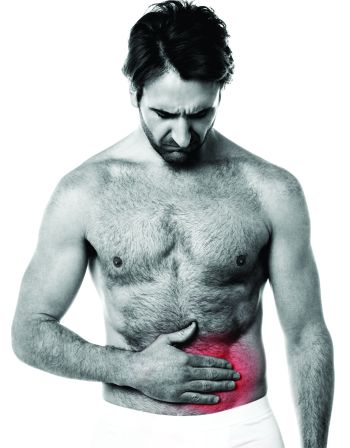Hernia Surgery
 Specialists at Alpine Surgical have repaired thousands of hernias. Thanks to advancements in surgical technology, most are repaired using minimally invasive surgical techniques.
Specialists at Alpine Surgical have repaired thousands of hernias. Thanks to advancements in surgical technology, most are repaired using minimally invasive surgical techniques.
Recognized by US News & World Report, Alpine Surgical’s comprehensive patient-centered approach allows our patients to focus on healing while we navigate the rest.
Drs. Fox and Beckley understand that today’s patients have busy, active lifestyles. Their personalized approach to surgery provides patients with smaller incisions, shorter hospital stays and quicker return to life’s activities.
Whether you need to be at your child’s graduation or back out on the trail, our team works to provide laparoscopic surgical options to get you back on your feet quickly.
Please call
What is a Hernia?
A hernia is a bulge or protrusion of any bodily organ through an area that it doesn’t belong. Hernias are most often found in the abdominal wall. They can, however, occur anywhere in the body. Hernia repair surgery is one of the most common surgical conditions treated by a general surgeon. Alpine Surgical has expertise in treatment of all types of hernias, including minimally invasive complex abdominal wall reconstructions.
Hernia: Common Types
Incisional Hernia
- INCISIONAL hernias occur at the site of any previous surgical incision.
Umbilical Hernia
- UMBILICAL hernias occur around the naval where the umbilical cord once passed through the abdominal wall.
Inguinal Hernia
- INGUINAL hernias occur in the groin where ovarian and testicular ligaments as well as other internal structures pass through the abdominal wall. These may be acquired (wear and tear) or congenital (remnants left over from birth).
Femoral Hernia
- FEMORAL hernias occur just below the groin. It may appear similar to an inguinal hernia. It occurs where blood vessels and nerves pass through the groin into the leg.
Epigastric Hernia
- EPIGASTRIC hernias (similar to an umbilical hernias) occur higher up on the abdomen between the naval and the chest.
Ventral Hernia
- VENTRAL hernias occur anywhere in the abdominal wall.
Hiatal Hernia
- HIATAL hernias occur inside the chest. This happens when the esophagus or stomach protrude through the diaphragm, the muscle that separates the chest from the abdomen. With these hernias, patients may not see or feel a bulge because the hernia is inside the abdominal or chest cavity. These hernias are commonly associated with GERD (Gastro Esophageal Reflux Disease) and intestinal blockages. See Esophagus section for more details.
Hernia: Uncommon or Special Types
- SPIGELIAN hernias occur in the abdominal wall just outside the border of the rectus or “six-pack” muscles.
- PEDIATRIC hernias are caused by an abdominal wall defect that fails to close after birth. These are repaired by traditional means without mesh. Children generally recover quickly from their surgery.
- COMPLEX ABDOMINAL WALL RECONSTRUCTION is often required for large ventral or incisional hernias where stomas may be involved. This may be performed laparoscopically or via a traditional (open) technique. This may involve an Abdominal Component Separation to bridge closed the hole.
- SPORTS HERNIA is a unique type of hernia. In most cases, a tear in the abdominal wall is not present. For simplicity sake, it represents an overuse type injury. When conservative measures fail to improve symptoms, surgery can sometimes be beneficial. They are approached similar to the repair of a traditional groin hernia.
Hernia Repair Surgery
A hernia is generally repaired surgically. This can be done through minimally invasive surgery (laparoscopy) or via traditional (open) means. A laparoscope is a tiny video camera inserted through a small incision in the abdomen. Through this camera, the doctor can see inside and use small tools to repair the hernia. During your consultation, we will discuss the best treatment options for you.
Hernia surgery is performed under intravenous sedation or general anesthesia depending on the size and location. Traditional repairs are completed by creating an incision over the hernia. The muscle tissue surrounding the weak area is sutured together thus repairing the defect.
In some cases, a mesh will be used to reinforce the weak area in the abdominal wall. There are a multitude of mesh options utilized these days. Some are made of strong flexible plastic (polypropylene), polyester, Goretex, or cadaver tissue. Some of these are permanent. Others are temporary.
The incision(s) are closed with either dissolvable sutures or skin staples.
After the procedure is complete, you will be taken to the recovery room for a few hours to wake up from the anesthesia. You will be allowed to have something to eat. You will also be asked to get up and walk to aid in the recovery process. Most small hernia repairs will be discharged to home. If you have a large or complex hernia repair, you may be admitted to the hospital to recover.
Getting Back to Normal
- Following your surgery, you may experience constipation while taking the pain medications. This is normal and should resolve itself. To aid in this process, we recommend that you use an over the counter stool softeners and fiber supplement. You may eat as tolerated.
- Bruising and swelling is especially common after inguinal hernia surgery. Swelling and discoloration can be alarming. It returns to normal within a few weeks.
- Post surgery pain is common. Be sure to utilize the pain medication prescribed to you by your physician.
- You will be allowed to shower the day after your surgery. You should avoid soaking in a bath or hot tub until after your follow up visit.
- Lifting and driving restrictions are specified on your postoperative instruction sheet.
- Ease back into your normal daily activity and be sure to eat balanced, healthy meals.
- Please be sure to keep your follow up appointment approximately 10-14 days after your surgery.
Please call 303‑449‑3642 to schedule your appointment today.
